Table of Contents
Ever found yourself mid-recipe, ready to whip up some fluffy pancakes or a moist cake, only to discover you're completely out of buttermilk? It's a baking crisis, I know! But don't worry, I’ve been there, and I've got a secret weapon: sour cream. Yes, that tangy tub in your fridge can be a fantastic stand-in. This article isn’t just about a quick fix, though. We're going to explore the ins and outs of using sour cream as a buttermilk substitute. I'll show you why it works, how to do it right, and even what to watch out for. You'll also get some cool tips and tricks to ensure your baked goods turn out amazing. We'll start by understanding what buttermilk actually *is*, and why it's so important in baking. Then, we'll get to the good stuff: exactly how to substitute sour cream for buttermilk. We'll even compare them side-by-side, talk about other alternatives, and find out what recipes are perfect for this swap. Get ready to become a master of substitutions and never let a missing ingredient ruin your baking plans!
Understanding Buttermilk
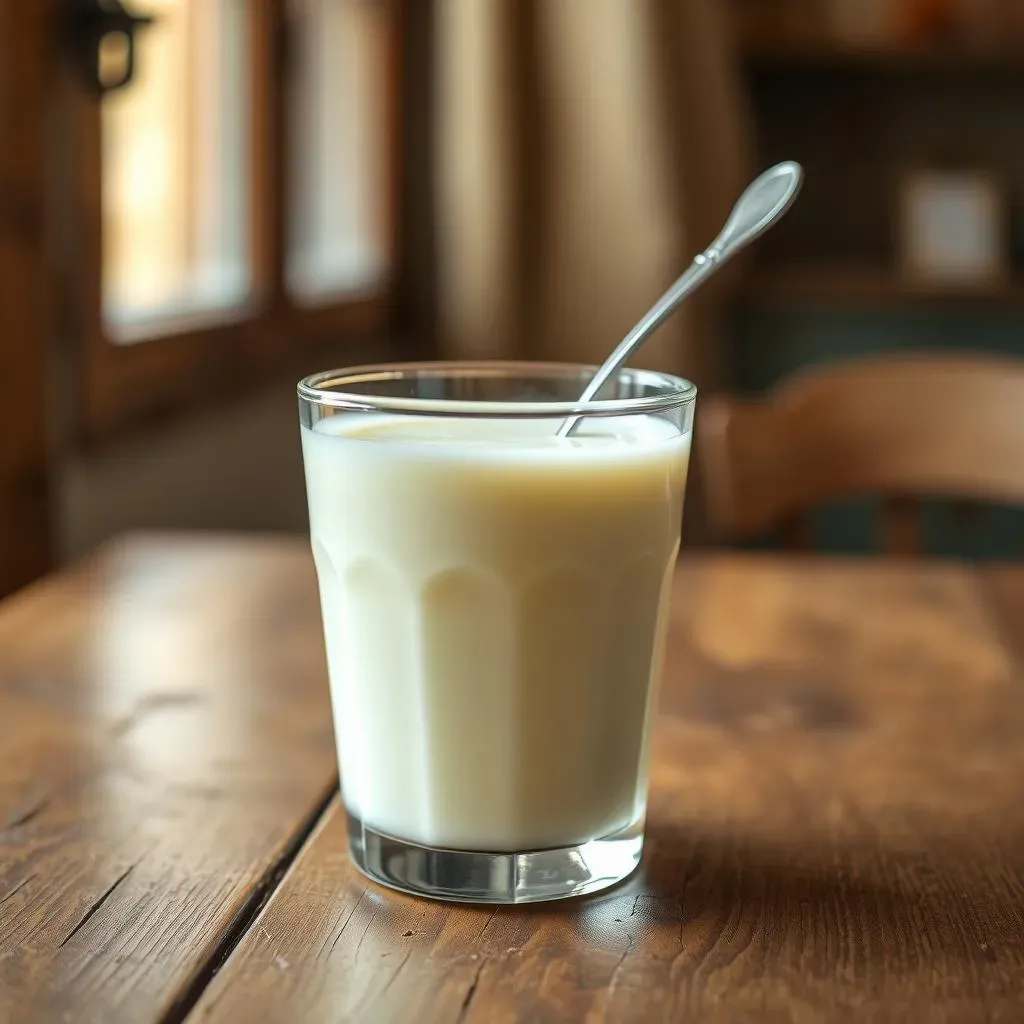
Understanding Buttermilk
What Exactly IS Buttermilk?
Okay, so let's clear something up right away: buttermilk isn't actually the "butter's milk." It's not what's left over from making butter these days. Back in the day, when butter was churned, the liquid left behind was indeed called buttermilk. This liquid was naturally fermented, giving it a tangy flavor. Nowadays, most buttermilk you find in the store is made by adding bacteria to regular milk, which then ferments it. Think of it like a cousin to yogurt, but a bit thinner and with a more distinct, sour taste. It’s this tang that makes it so special in baking.
I know, it sounds a little weird to add something sour to your sweet treats, but trust me on this one. The fermentation process is what gives buttermilk its unique properties. It's not just about flavor; the acidity in buttermilk does some heavy lifting in your recipes. It helps break down gluten, leading to softer, more tender baked goods. Plus, it reacts with baking soda to create those lovely air bubbles that make your cakes and pancakes super fluffy. It’s a bit of a kitchen superhero, really, even if it doesn't sound like it at first.
Buttermilk's Key Characteristics
- Tangy Flavor: A slightly sour taste due to fermentation.
- Acidity: Helps tenderize baked goods and activate baking soda.
- Thin Consistency: Thinner than regular milk but slightly thicker than water.
- Fermented: Produced through a fermentation process.
Why Is It So Important in Baking?
So, why can't we just use regular milk? Well, we could, but you wouldn't get the same results. Buttermilk's acidity is the secret ingredient. It tenderizes gluten, which is the protein in flour that can make baked goods tough. By breaking down these proteins, buttermilk gives you that melt-in-your-mouth texture we all crave. Imagine a cake that's dense and chewy versus one that's light and airy – that's the difference buttermilk can make. Plus, that tang adds a little something special to the flavor profile, making your baked goods taste richer and more complex.
The other key thing is how buttermilk reacts with baking soda. When these two ingredients meet, they create carbon dioxide, which is what makes your cakes rise. This reaction is crucial for achieving a good lift and a light, fluffy texture. Without it, you might end up with something flat and dense. It’s like a little science experiment happening right in your mixing bowl, and the results are totally delicious. So, next time you see buttermilk on a recipe list, know that it's doing a lot more than just adding liquid; it’s the key to baking success!
Buttermilk's Role in Baking
Benefit | How It Works |
|---|---|
Tenderizes Gluten | Acidity breaks down proteins in flour. |
Adds Flavor | Tangy taste enhances richness and complexity. |
Activates Baking Soda | Creates carbon dioxide for a light and airy texture. |
Why Use a Buttermilk Substitute?

Why Use a Buttermilk Substitute?
The "Oops, I'm Out" Scenario
Let's be honest, how many times have you started a recipe, only to find you're missing that one crucial ingredient? Buttermilk is often one of those things that we don't always keep on hand. It's not like milk, where you might use it daily; it’s more of a specialty item that shows up in specific recipes. So, when you're in the middle of making your grandma's famous biscuits and discover you have no buttermilk, what do you do? That's where a good substitute comes in handy! It saves you a trip to the store and keeps your baking plans on track. It's all about being resourceful and keeping the baking momentum going.
More Than Just Convenience
While convenience is a big reason, using a buttermilk substitute isn't just about avoiding a grocery run. Sometimes, you might just prefer the taste of a substitute or want to use what you already have in your kitchen. Maybe you're trying to reduce food waste, or perhaps you're curious about how different ingredients affect your baking. For instance, using sour cream as a substitute can add a slightly richer flavor that you might enjoy more than traditional buttermilk. It's all about exploring and finding what works best for you and your taste buds. It’s like a mini-experiment every time you bake.
Reason | Explanation |
|---|---|
Convenience | Avoid a trip to the store when you're out of buttermilk. |
Taste Preference | Experiment with different flavors by using various substitutes. |
Resourcefulness | Use ingredients you already have to reduce waste. |
The Allergic or Dietary Needs
Also, let's not forget about those with dietary restrictions or allergies! Some people can't have dairy products, so buttermilk is a no-go. Having a list of reliable substitutes means that everyone can enjoy those delicious recipes. It’s about making sure that no one is left out because of dietary needs. Whether you're avoiding dairy, or just trying to use up what's in the fridge, knowing how to substitute is a game-changer. It makes baking more inclusive and accessible. It really is about flexibility and finding the best solutions for everyone.
How to Substitute Sour Cream for Buttermilk
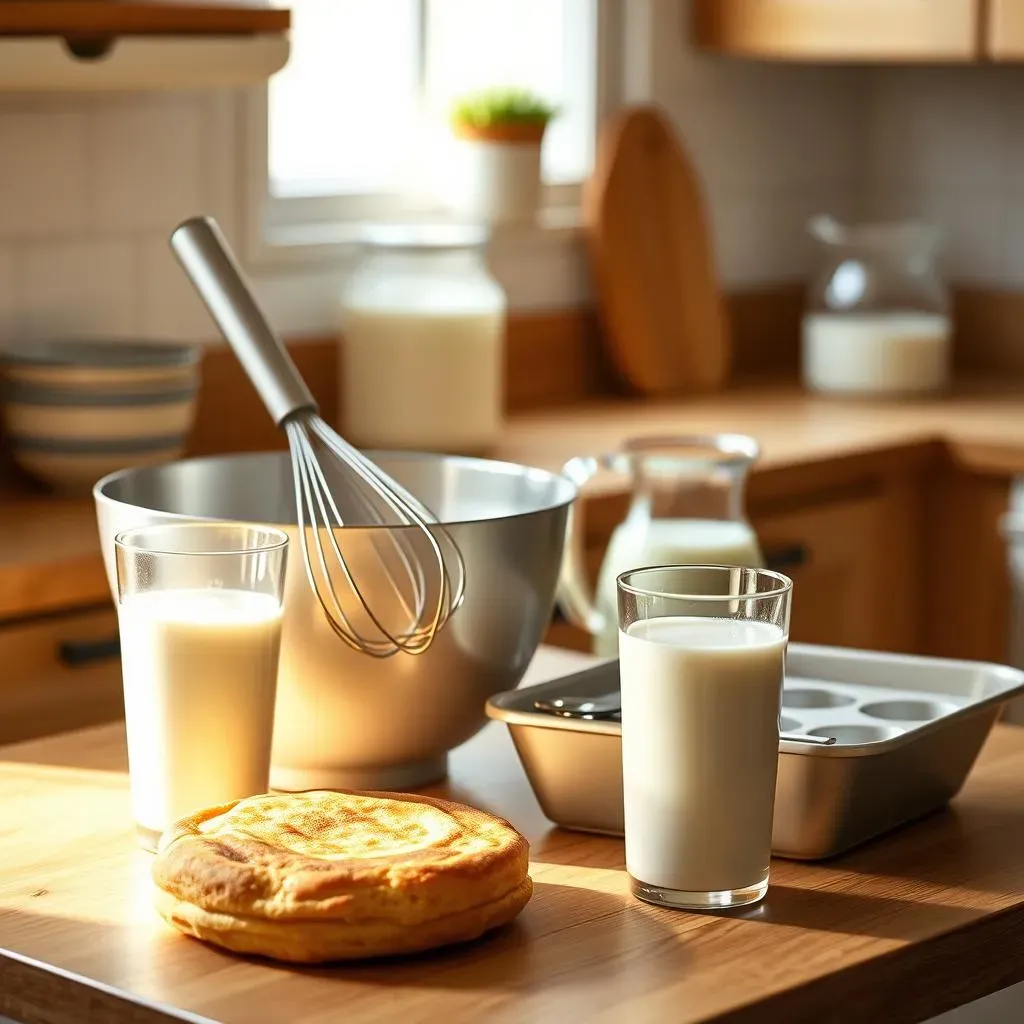
How to Substitute Sour Cream for Buttermilk
The Basic Ratio
Okay, let's get to the heart of it: how do you actually swap sour cream for buttermilk? It’s not a straight 1:1 swap, since sour cream is much thicker. The key is to thin it out to match the consistency of buttermilk. The magic ratio is this: for every 1 cup of buttermilk your recipe calls for, you'll use ¾ cup of sour cream plus ¼ cup of liquid. That liquid can be water or milk, depending on what you have on hand and your preference. I usually go with milk for a little extra richness, but water works just fine too. It’s like we're creating a buttermilk imposter, but a really good one!
You might be thinking, "Is it really that simple?" And honestly, yeah, it pretty much is. The goal here is to get the texture right. You want that sour cream to be nice and pourable, just like buttermilk. So, don't be afraid to play around with that ¼ cup of liquid a little bit. If you find that your mixture is still too thick, add a tablespoon of liquid at a time until you reach the right consistency. It's all about getting that feel. You'll get the hang of it after a few tries, trust me.
Mixing It Up
Now that you have the ratio down, let's talk about how to mix it all together. I've found the best way is to measure out your sour cream into a bowl, then slowly whisk in the liquid. It's kind of like making a sauce, you don't want to just dump everything in at once. Whisking it slowly helps to create a smooth, lump-free mixture. Keep whisking until it’s well combined and has that pourable texture we talked about. You'll notice it’ll start to look more like buttermilk as you go. It’s pretty satisfying to watch!
Once you have that smooth, buttermilk-like mixture, you can go ahead and use it in your recipe just like you would regular buttermilk. No need to let it sit or anything, it's ready to go. Now, I know some people might be worried about the fat content, since sour cream tends to be richer than buttermilk. But honestly, in most recipes, the difference is negligible. If you’re really trying to cut back, you could use a low-fat sour cream, but I wouldn't recommend fat-free, as it might not give you the same results.
Ingredient | Amount |
|---|---|
Sour Cream | ¾ cup |
Water or Milk | ¼ cup |
A Word on Consistency
I can't stress enough how important consistency is when you're making this substitution. You're aiming for something that's pourable, not thick and gloppy. If your mixture is too thick, it won't incorporate properly into your batter or dough, and you might end up with a dense, uneven bake. On the flip side, if it’s too thin, it might throw off the liquid balance in your recipe, and you could end up with something that's too wet or runny. So, take your time and make sure you get it just right.
Also, keep in mind that the thickness of sour cream can vary a little bit between brands. Some are thicker than others, so you might need to adjust the amount of liquid slightly. The best way to figure it out is just to use your eyes and your gut feeling. If it looks like buttermilk, it probably is close enough. And hey, even if it's not perfect, it’ll still be delicious. Baking is all about learning and experimenting, so don't be afraid to get a little hands-on!
Sour Cream vs. Buttermilk: What's the Difference?
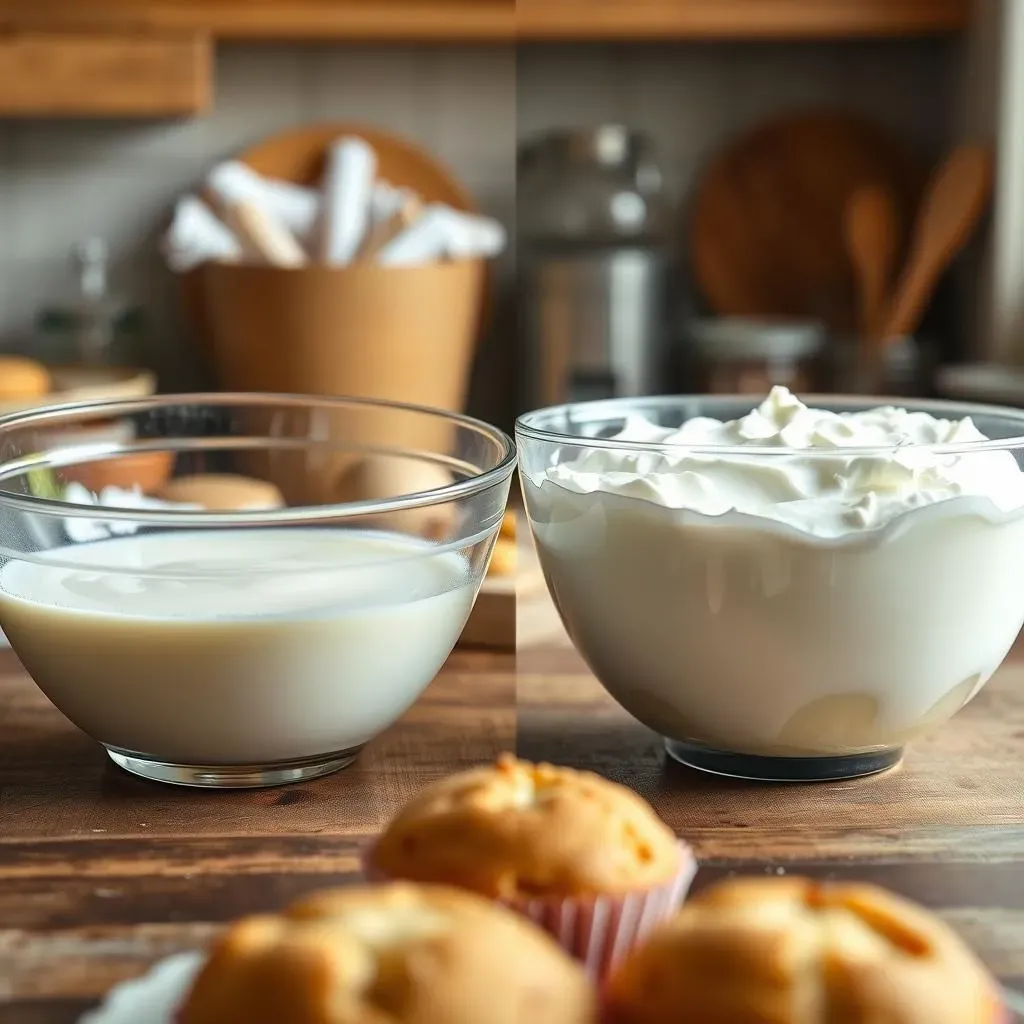
Sour Cream vs. Buttermilk: What's the Difference?
The Tangy Tale
So, you're probably wondering, if sour cream can stand in for buttermilk, what makes them different in the first place? It all comes down to how they're made and their specific properties. Buttermilk, as we talked about, is a fermented dairy product, traditionally the liquid left over from churning butter. Nowadays, it’s usually made by adding bacteria to milk. Sour cream, on the other hand, is made by adding lactic acid bacteria to cream. This process thickens the cream and gives it that characteristic tangy flavor. Both are tangy because of the fermentation, but they start from different places and end up with different textures and fat contents.
Think of it like this: buttermilk is the cool, thin cousin, while sour cream is the rich, thick one. Buttermilk is more about acidity and less about fat, which is why it's so great for tenderizing gluten and activating baking soda. Sour cream, while also acidic, is much higher in fat, which is why it can add a richer flavor and a more moist texture to baked goods. While they both bring tanginess to the party, they play slightly different roles in the baking process, which is why we need to adjust things when we substitute one for the other. It's like they have different personalities, but they both know how to have a good time in the kitchen!
Characteristic | Buttermilk | Sour Cream |
|---|---|---|
Base | Milk | Cream |
Texture | Thin, pourable | Thick, creamy |
Fat Content | Lower | Higher |
Primary Use in Baking | Tenderizing, activating leavening | Adding richness, moisture |
Tips for Using Sour Cream as a Buttermilk Substitute

Tips for Using Sour Cream as a Buttermilk Substitute
Alright, so you've got the basic substitution down, but let's talk about some pro tips to really nail it. First, always remember to adjust the liquid. Don't just dump in the sour cream and call it a day; you need to thin it out properly. I recommend starting with the ¾ cup sour cream and ¼ cup liquid ratio, but be prepared to add a little more liquid if needed to get that pourable consistency. It's all about the feel, remember? And if you want to add a bit more tang to your bake, I always add a tiny splash of lemon juice, too. It's not necessary, but it does give it that extra punch of flavor that buttermilk is known for. It’s like giving your substitute a little extra boost!
Another thing to keep in mind is the fat content. Sour cream is higher in fat than buttermilk, so using it might make your baked goods a bit richer and more tender. In most cases, this is a good thing, but if you're trying to cut back on fat, you can opt for a lower-fat sour cream. However, I've found that fat-free sour cream doesn't always work as well, as it can lack the richness and moisture. Also, when you're mixing your sour cream and liquid, go slow and steady. Don't just dump everything in at once, or you might end up with a lumpy mess. Whisk it gradually to ensure it’s smooth and well combined before adding it to your batter. It's all about taking your time and doing it right!
Tip | Explanation |
|---|---|
Adjust Liquid | Thin sour cream to a pourable consistency. |
Add Lemon Juice | Boost tang with a splash of lemon juice. |
Consider Fat Content | Use low-fat sour cream if desired, but avoid fat-free. |
Mix Gradually | Whisk slowly to achieve a smooth mixture. |
Also, don't be afraid to experiment a little. Baking is a science, but it’s also an art. Try using different liquids to thin out your sour cream. Milk will give you a richer flavor, while water is a bit lighter. See what works best for you and your recipes. And, if you’re trying to make a recipe that calls for a lot of buttermilk, like a pound cake or a large batch of pancakes, you might want to consider using a combination of sour cream and another substitute, like yogurt or kefir. It's all about finding the right balance. The more you bake, the more you'll get a feel for it. It’s like a cooking adventure each time!
Finally, always taste your batter or dough (if it's safe to do so). It’s a great way to gauge if the flavor is on point. If you feel like it needs a little more tang, add a bit more lemon juice. And remember, even if your substitution isn't perfect, it’s still going to be delicious. Baking is all about learning and having fun. So, don’t stress about it too much. Just enjoy the process and appreciate the results, no matter how they turn out. Even mistakes can be tasty!
Other Buttermilk Substitutes You Can Try
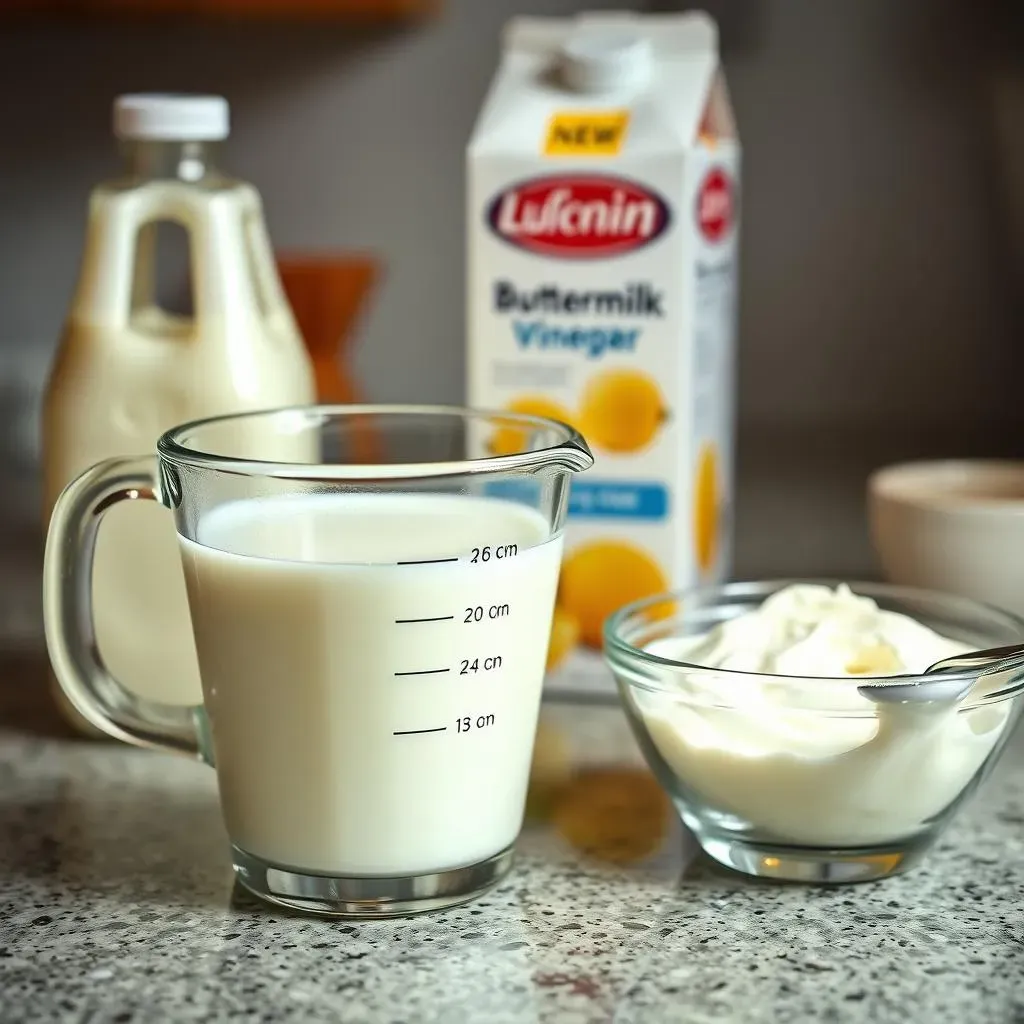
Other Buttermilk Substitutes You Can Try
Yogurt: The Tangy Cousin
Okay, so maybe you don't have sour cream either – it happens! Don't panic, there are other heroes in your fridge waiting to be called into action. Yogurt, especially plain yogurt, is a fantastic substitute for buttermilk. Like buttermilk and sour cream, yogurt has that lovely tang thanks to lactic acid, which means it can bring a similar flavor profile to your baked goods. The key here is to thin it out, just like we did with the sour cream. You can use the same ratio: ¾ cup of yogurt plus ¼ cup of water or milk for every 1 cup of buttermilk called for in your recipe. I find that Greek yogurt works exceptionally well because it’s so thick, but any plain yogurt will do the trick. It’s like a culinary chameleon, adapting to whatever you need it to be!
Now, you might be wondering if there's any difference between using yogurt and sour cream. Well, yogurt tends to be a bit lighter and less rich than sour cream, so your baked goods might not be quite as moist or tender. However, the difference is usually pretty subtle, and most people won't even notice. The most important thing is to get the consistency right. You want that yogurt mixture to be nice and pourable, just like buttermilk. If you're feeling adventurous, you can even try different types of yogurt, like kefir, which is a bit thinner and has a unique flavor profile. It’s all about experimenting and seeing what works for you. Baking should be fun, not stressful!
Milk and Lemon Juice: The Quick Fix
Alright, let’s say you’re really in a pinch and don’t have yogurt or sour cream. No worries! You can still make a decent buttermilk substitute with just milk and a little bit of acid. The classic method involves mixing 1 tablespoon of lemon juice or white vinegar with 1 cup of milk. You then let it sit for about 5 minutes. This allows the acid to react with the milk, causing it to curdle slightly and thicken a bit. It's not exactly the same as buttermilk, but it does a pretty good job of mimicking the tang and acidity you need for baking. It's like a quick science experiment that you can eat afterwards!
While this method is super convenient, it’s worth noting that it won’t give you quite the same results as store-bought buttermilk or a sour cream/yogurt substitute. The texture might be a little different, and the flavor might not be as complex. But for a quick fix, it’s a lifesaver. Just make sure to use whole milk for the best results, as it has a higher fat content that will help give your baked goods a little more richness. And don't be tempted to skip the waiting time! Those five minutes are essential for the acid to do its magic. It’s like a mini transformation happening right before your eyes, and it’s pretty cool to watch.
Substitute | Ratio | Notes |
|---|---|---|
Yogurt | ¾ cup yogurt + ¼ cup liquid | Use plain yogurt, Greek works well. |
Milk and Lemon Juice/Vinegar | 1 tbsp lemon juice/vinegar + 1 cup milk | Let sit for 5 minutes before use. |
Kefir | 1 cup kefir | Use as a 1:1 substitute. |
Recipes Where Sour Cream Works Great
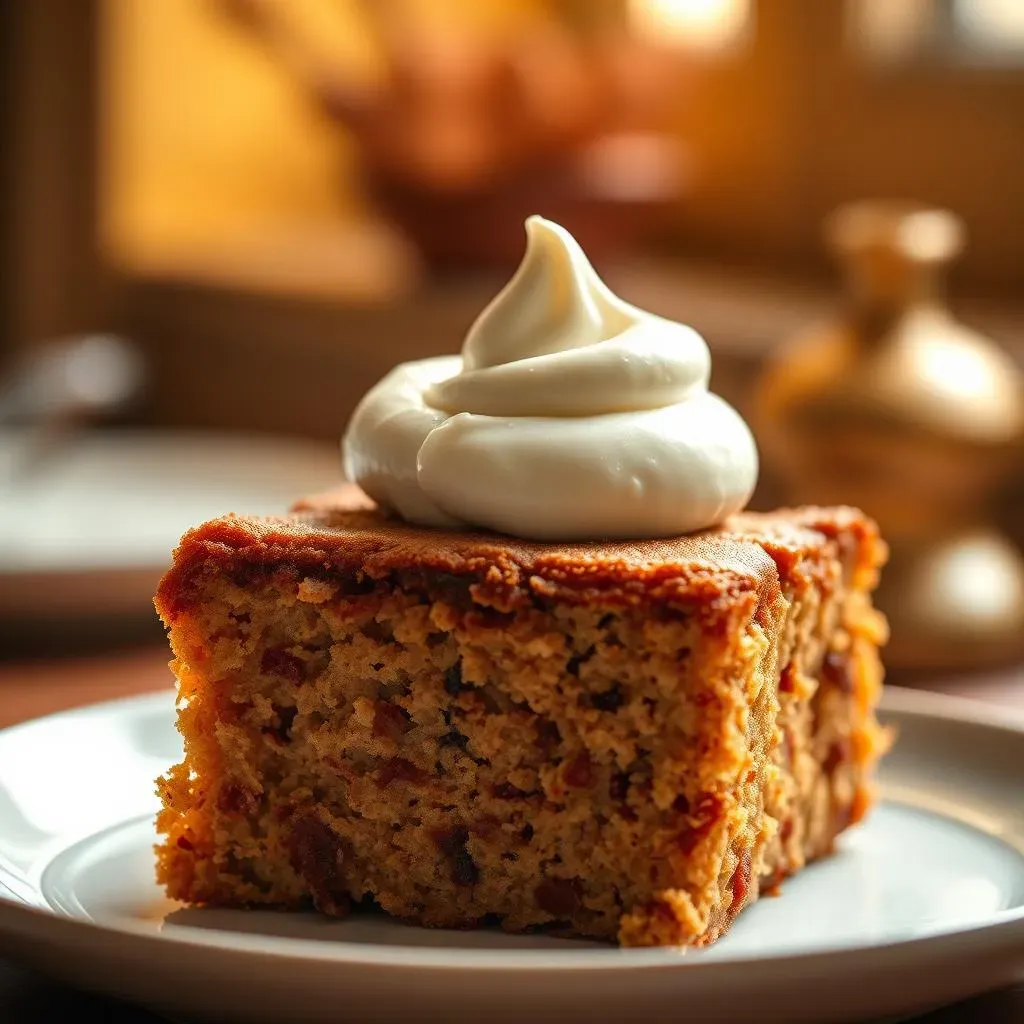
Recipes Where Sour Cream Works Great
Okay, so we've talked a lot about how to substitute sour cream for buttermilk, but now let's get to the fun part: where does this substitution really shine? I've found that sour cream works wonders in recipes where you want a bit of extra richness and moisture. Think about things like pancakes, cakes, and muffins – these are prime candidates for the sour cream switch-up. The higher fat content in sour cream can make these baked goods incredibly tender and flavorful, sometimes even more so than if you used buttermilk alone. It's like a secret upgrade that takes your baking to the next level. And honestly, who doesn't want a more delicious cake?
But it's not just about sweet treats, sour cream can also be great in savory recipes. I love using it in biscuits, scones, and even in some quick breads. The tanginess of the sour cream complements the other flavors beautifully, and the extra moisture keeps things from drying out. It's also fantastic in creamy sauces and dressings, where that rich texture really makes a difference. I even use it in my mashed potatoes sometimes for an extra creamy and tangy twist. Seriously, once you start using it as a substitute, you'll find yourself reaching for the sour cream in all sorts of recipes. It's a real game-changer, I'm telling you!
Recipe Type | Why Sour Cream Works |
|---|---|
Pancakes | Creates extra fluffy and moist pancakes. |
Cakes | Adds a rich, tender crumb and flavor. |
Muffins | Keeps muffins moist and flavorful. |
Biscuits & Scones | Adds moisture and a slight tang. |
Savory Sauces & Dressings | Provides a rich, creamy texture. |
Troubleshooting Common Issues
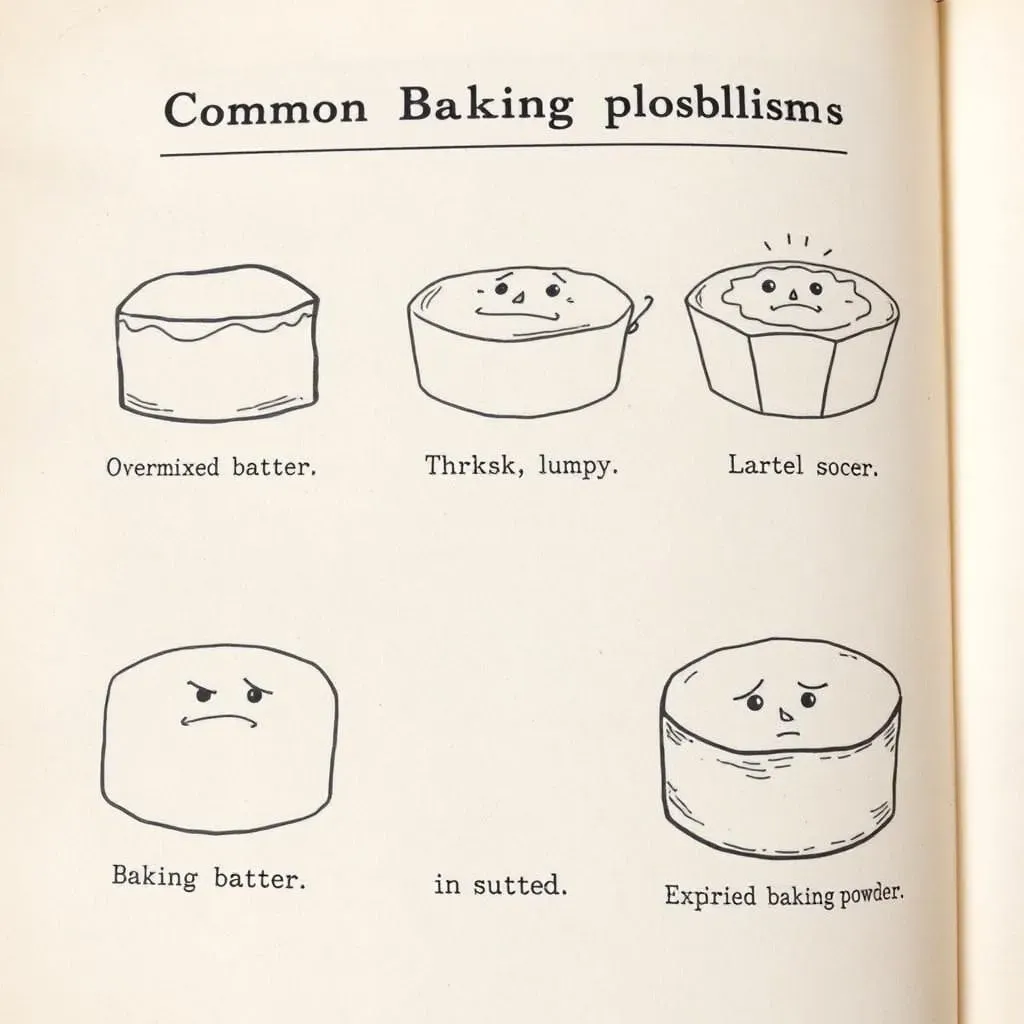
Troubleshooting Common Issues
The Batter's Too Thick
Okay, so you've mixed your sour cream and liquid, but the batter is still looking way too thick? Don't panic! This is a pretty common issue when you're using sour cream as a buttermilk substitute. The first thing to check is your sour cream. Is it extra thick? Some brands just are. If that's the case, just add a bit more liquid, a tablespoon at a time, until you get the right consistency. Remember, you're aiming for something pourable, like heavy cream. Also, make sure you measured correctly. It's easy to accidentally add too much sour cream, which will definitely make things too thick. Double check those measurements and make sure you're not using a cup when you should be using a 3/4 cup. It's a common mistake, and we've all done it before. It’s like a little detective work to find the culprit!
Another thing to consider is the temperature of your ingredients. If your sour cream is straight from the fridge, it might be a little harder to mix and thin out. Try letting it sit at room temperature for 10-15 minutes before you start mixing. This will make it easier to incorporate with the liquid. And hey, even if you do everything perfectly, sometimes a recipe just needs a little more liquid. Don't be afraid to add a tablespoon or two until you reach the right consistency. Baking isn't about following the rules perfectly, it's about making adjustments as needed. It’s like a choose your own adventure, where you're the hero!
Problem | Solution |
|---|---|
Batter is too thick | Add more liquid (milk or water), 1 tbsp at a time. |
Sour cream is too cold | Let sour cream sit at room temperature for 10-15 minutes before mixing. |
Measurements are off | Double-check your measurements, especially the sour cream. |
The Baked Goods Are Too Dense
So, you’ve done everything right, but your baked goods are still turning out dense and heavy? This can be frustrating, but let's troubleshoot it! First off, make sure your baking powder or baking soda is fresh. If they are too old, they lose their potency and won't give you the rise you need. It's like they're on vacation and not doing their jobs! Also, make sure you're not overmixing your batter. Overmixing develops the gluten in the flour, which can lead to a tough, dense texture. Mix just until the ingredients are combined. It's like you're barely whispering to the batter, not yelling at it!
Another common issue is not having enough leavening. If your recipe calls for a specific amount of baking powder or baking soda, stick to it. It's like a carefully calibrated science experiment, and you need the right amount of each ingredient to make it work. Also, remember that buttermilk, and thus the sour cream substitute, needs to react with baking soda to create that lift. If you're using baking powder only, you might not get the same results. But don't worry, baking is a journey, and you'll get the hang of it! It’s all about learning and improving your baking skills.
- Expired leavening: Ensure baking powder and baking soda are fresh.
- Overmixing: Mix batter just until combined to prevent toughness.
- Insufficient leavening: Use the correct amount of baking powder or baking soda for proper rise.
The Flavor's Not Quite Right
Sometimes, even if the texture is great, the flavor might be a little off when you use a sour cream substitute. If you find that your baked goods aren't as tangy as you'd like, try adding a bit more lemon juice to your sour cream mixture. A teaspoon or two can make a big difference. It's like adding a little zing to your bake. Also, remember that sour cream has a different flavor profile than buttermilk. It's richer and more fatty, so it might add a slightly different flavor to your baked goods. This isn't necessarily a bad thing, it's just something to be aware of. And hey, maybe you'll even prefer the taste of sour cream over buttermilk! It's all about finding what works for you and your taste buds.
If you think your baked goods are tasting a little too rich, you can try using a lower-fat sour cream next time, though I'd avoid fat free. This will help balance out the flavors. Also, don't forget that other ingredients can play a role in the overall flavor. Sometimes, a recipe just needs a pinch of salt or a dash of vanilla to bring everything together. Baking is about balance, and it's okay to experiment a little to find what tastes best to you. It's like a flavor adventure where you're the guide!
"The key to baking is not just following the recipe, but understanding how the ingredients interact. It's about making adjustments and learning from each bake." - A Wise Baker
Final Thoughts on Buttermilk Alternatives
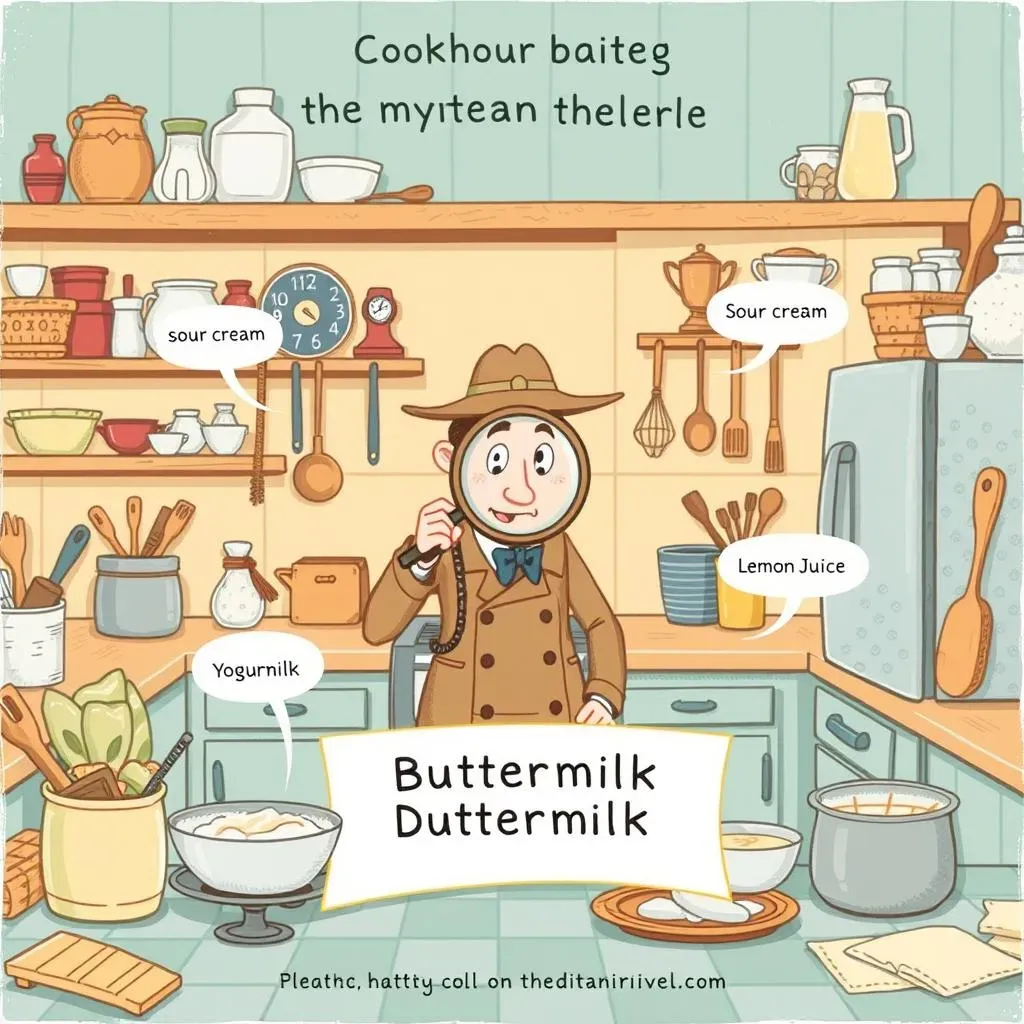
Final Thoughts on Buttermilk Alternatives
Embracing the Flexibility
Alright, my fellow baking enthusiast, we've reached the end of our buttermilk substitute journey, and what a journey it's been! We’ve explored the magic of sour cream, the tangy charm of yogurt, and even the quick fix of milk and lemon juice. The main thing I want you to take away from all this is that baking doesn't have to be rigid. It's okay to experiment, to make substitutions, and to use what you have on hand. It's about being creative and adaptable in the kitchen. So, next time you're missing buttermilk, don't let it stop you. Instead, think of it as a fun challenge, an opportunity to try something new. It's like we're all baking detectives, finding the best solutions for every recipe!
I know, sometimes it can feel overwhelming to think about all the different options, but trust me, you've got this. Whether you're using sour cream, yogurt, or even just a splash of lemon juice, you can still create delicious and amazing baked goods. The important thing is to pay attention to the consistency and the flavors. And don't be afraid to make adjustments along the way. Baking is all about learning and growing, and every time you step into the kitchen, you're one step closer to becoming a baking master. So, go forth and bake with confidence! It’s like your own personal baking adventure, where you are the star!
The Joy of Baking
Ultimately, the best substitute for buttermilk is the one that works best for you. It might be sour cream, it might be yogurt, or it might be a combination of a few different things. The important thing is to have fun and enjoy the process. Baking isn't about perfection, it's about the joy of creating something delicious and sharing it with the people you love. So, embrace the flexibility, experiment with different flavors, and don't be afraid to make mistakes. Every mistake is just a learning opportunity, and every bake is a step towards becoming a better baker. It's like we're all part of this awesome baking community, sharing tips and tricks, and making the world a little bit sweeter, one recipe at a time!
So, my friend, go forth and bake with confidence! I hope you’ve learned a thing or two about how to substitute sour cream for buttermilk and other alternatives. Remember, the kitchen is your playground, and baking is your superpower. Don't be afraid to experiment, to make mistakes, and to have a little fun along the way. And most importantly, don't forget to share your delicious creations with the people you love. It’s like we're all connected through the magic of baking, and that’s a pretty amazing thing!
Key Takeaway | Action |
|---|---|
Flexibility is Key | Experiment with different substitutes. |
Enjoy the Process | Have fun and don't stress about perfection. |
Share the Love | Share your delicious creations with others. |